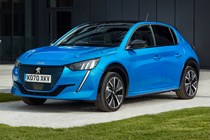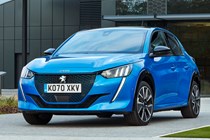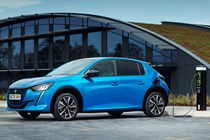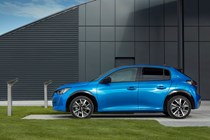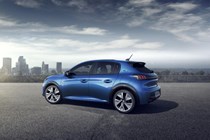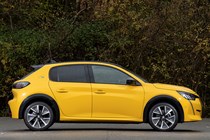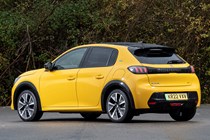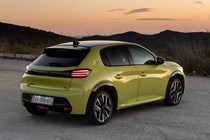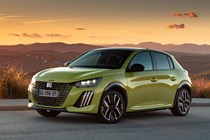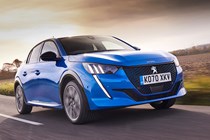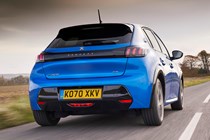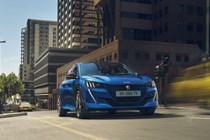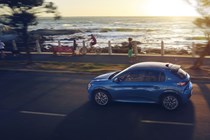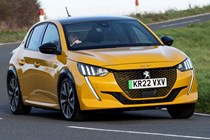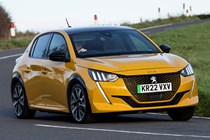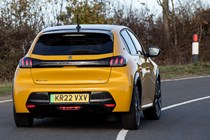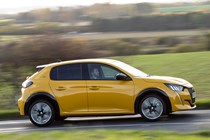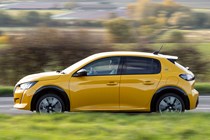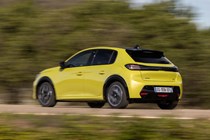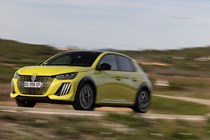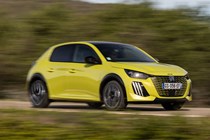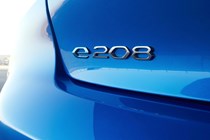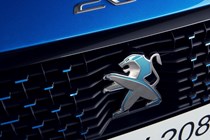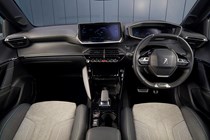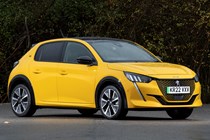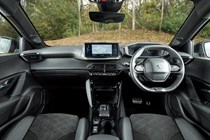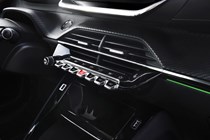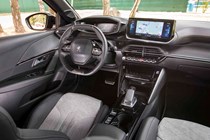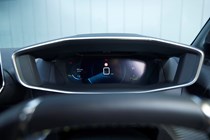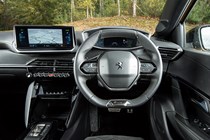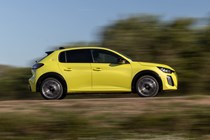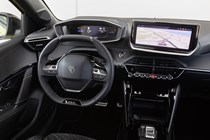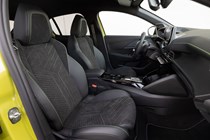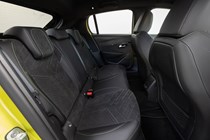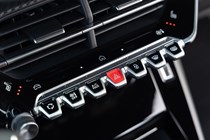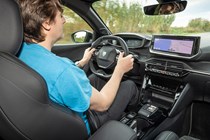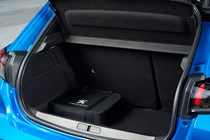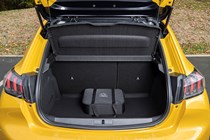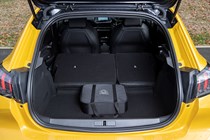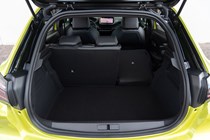
Peugeot e-208 running costs and reliability
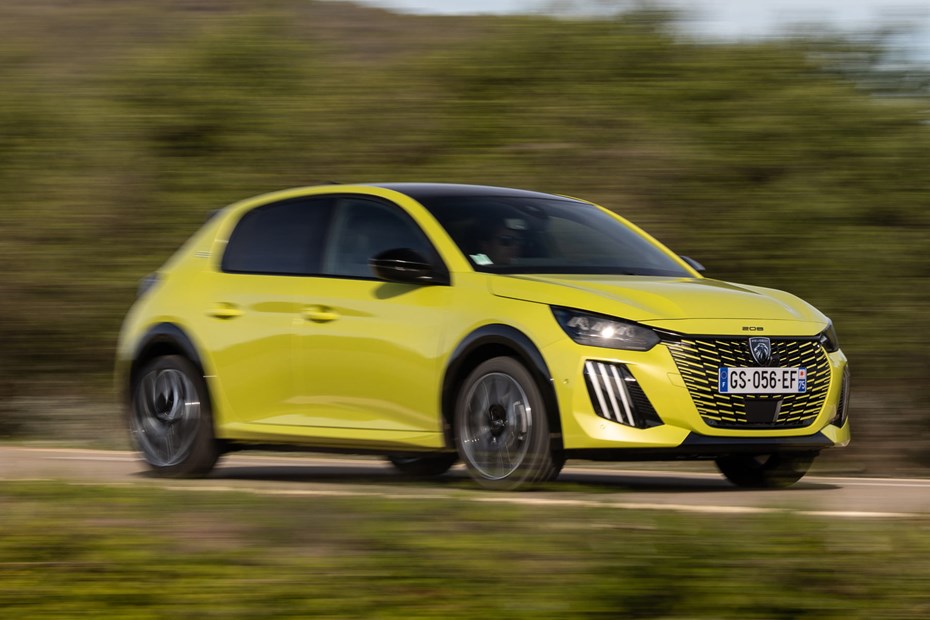
Miles per pound (mpp) ⓘ
| Electric motors, home charging | 10.3 - 13.2 mpp |
|---|---|
| Electric motors, public charging | 5.6 - 7.1 mpp |
Fuel economy ⓘ
| Electric motors | 3.5 - 4.5 miles/kWh |
|---|
- Efficient shape means low running costs
- Able to charge in 7.5 hours at home
- Less to service but may get through tyres quicker
What are the running costs?
As an electric car, the Peugeot E-208 has the potential to be incredibly cheap to run. The most cost-effective method it is to charge at home, using off-peak electricity. However, if you regularly make use of fast public charging, this will be much more expensive.
The original 136hp Peugeot E-208 has never proven to be particularly efficient, either, often falling some way short of its claimed driving range. However, the newer 156hp model does seem to offer some efficiency improvements, as the increase in its official driving range is greater than a mere 1kWh of extra battery capacity would lead you to expect.
Range and charging
The 136hp E-208 uses a 50kWh battery pack, which originally gave it an official WLTP driving range of 217 miles. In our experience with the car, this estimate fell down somewhat, and we struggled to cover more than 150 miles on a full battery. What’s worse is that Peugeot’s range indicator defaults to a ‘best-case’ scenario on startup, which doesn’t provide you with an accurate view of how far you can actually travel. In fact, it’s rather disconcerting watching the miles tumble far faster than you cover them.
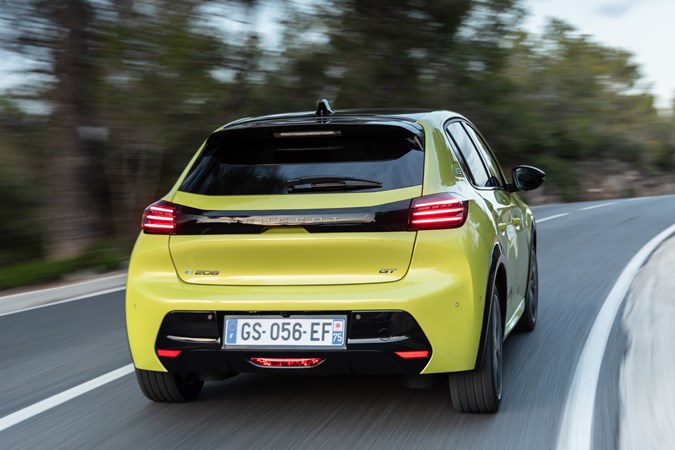
However, both this model and the newer 156hp version have undergone some efficiency upgrades. As such, the 136hp version now claims up to 236 miles per charge from its 50kWh battery, while the 156hp variant’s 51kWh battery pack is said to be good for as much as 258 miles per charge.
On a 7kW home Wallbox charger, a full charge of either battery size should take around 7.5 hours; using the car’s infotainment touchscreen or its companion smartphone app, you can time the charging to take advantage of cheaper, off-peak electricity tariffs.
Peugeot also includes 100kW DC fast charging, which on a suitably powerful public charger means you should be able to go 20-80% charged in around 25 minutes. But this will be much more expensive.
Servicing and warranty
Service intervals for the E-208 are 8,000 miles for the first dealer visit, then every 16,000 miles or two years from that point on. Peugeot states definitively that servicing costs should be cheaper than for a conventional car, as there is no oil to change and few moving parts – though the weight means you may get through tyres more quickly if you drive aggressively. Official Peugeot service plans are available to help spread costs.
The main E-208 warranty is for three years or 60,000 miles; it’s actually unlimited mileage in the first two years, but still a far less generous offering than many rival EVs, including the MG4, which is covered for up to seven years. The Peugeot’s drive battery does have an eight-year / 100,000-mile warranty, however, and you can buy an official Peugeot extended warranty if you want additional peace of mind.
Reliability
- Fewer moving parts should make for greater reliability
- But E-208 proving far from faultless so far
- Parkers readers seem to love their cars
You might expect electric cars to be more reliable than conventional petrol and diesels, simply because they have fewer moving parts. But this newer technology still seems to present plenty of problems, and you won’t have to look far on owners’ forums or Facebook groups to find E-208 drivers who have suffered some issues.
Most problems seem to be related to electrical systems – and like many other electric cars, the more ordinary 12v battery is often the chief culprit here, and the E-208 seems to be quite sensitive to hot climates. But there have been reports of knocking suspension and braking issues as well as issues with charging.
The one official safety recall we could track down was also related to electrical issues. Some 1,100 cars were impacted, so if buying used check that this recall work has been carried out.
On the plus side, our E-208 owner reviews section suggests Parkers’ readers love their Peugeots. So if you’ve got one, don’t be shy about adding your own experiences to help inform other potential buyers.
Ongoing running costs
| Road tax | £195 |
|---|---|
| Insurance group | 26 - 31 |
Get an insurance quote with

|
|



